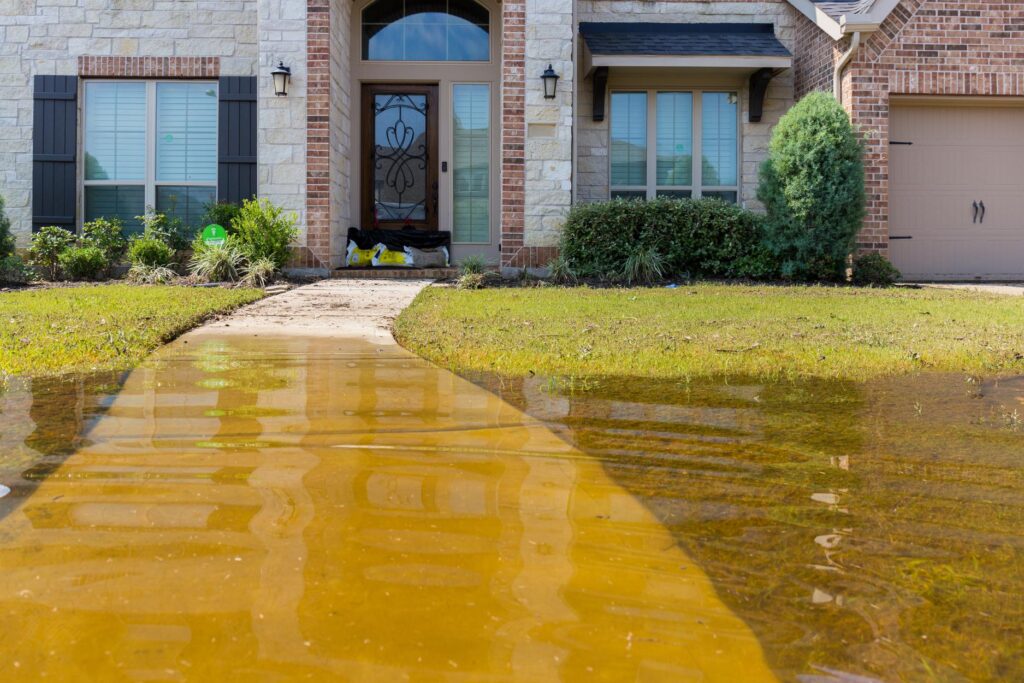
Contents
When faced with flood damage, your first priority should be safety. Assess the situation quickly, ensuring everyone is safe from hazards. Once you’ve done that, it’s essential to extract standing water as soon as possible to prevent further damage. Effective drying methods must be followed to minimize moisture and mold risks. But what comes next? Understanding the cleaning and repairing processes can make all the difference in restoring your space efficiently.
Key Takeaways
- Conduct a safety assessment to identify hazards and ensure the safety of all individuals before starting repairs.
- Use a wet/dry vacuum or submersible pump for effective water extraction from affected areas.
- Place dehumidifiers and fans to promote drying and reduce humidity in the space.
- Clean and disinfect all surfaces that came into contact with floodwater, focusing on porous materials.
- Evaluate structural damage and consult professionals for significant repairs or restorations if needed.
Assessing the Situation and Safety Precautions
When you’re faced with flood damage, evaluating the situation is essential to ensure your safety and the safety of others.
Start with a thorough safety assessment. Look for hazards like downed power lines, unstable structures, or contaminated water. If you spot any dangers, prioritize your wellbeing and that of your family; don’t hesitate to evacuate if necessary.
Next, check for potential injuries among those around you and provide first aid if you can.
If you’re unable to address a situation, contact emergency response services promptly. They’re trained to handle crisis situations effectively and can guide you on the next steps.
Water Extraction Methods
After evaluating the safety of your environment, it’s crucial to tackle water extraction promptly to minimize further damage.
Start by using a wet/dry vacuum for effective flood extraction. This tool allows you to remove standing water quickly and efficiently, making it a reliable first step. If the water is deep, consider submersible pumps, which can handle larger volumes and expedite moisture removal.
For smaller areas, absorbent materials like towels or mops can help, but be prepared for manual labor.
Don’t forget to check hidden spaces, such as behind walls or under floors, where water might accumulate. If you’re faced with extensive damage, hiring a professional water damage restoration service can ensure thorough extraction.
Drying and Dehumidification Techniques
Once you’ve successfully extracted the water, the next step focuses on drying and dehumidification to prevent further damage and mold growth. Proper dehumidifier placement is essential; make sure it’s in the most affected areas for maximum efficiency. Keep windows and doors closed to create a controlled environment for your dehumidifier to work effectively.
Utilizing moisture monitoring tools helps you track humidity levels, so you know when the space is adequately dried. Here’s a quick reference table to guide you:
| Technique | Description |
|---|---|
| Dehumidifiers | Remove excess moisture from the air |
| Fans | Increase air circulation for faster drying |
| Heat Sources | Warm air aids in evaporation |
| Moisture Meters | Measure humidity levels |
Implementing these techniques will greatly reduce the risk of mold growth, making sure your space remains safe and comfortable.
Cleaning and Sanitizing Affected Areas
Start by thoroughly cleaning and sanitizing the affected areas to eliminate any lingering contaminants and prevent health hazards.
Begin with a detailed inspection, identifying all surfaces that came into contact with floodwater. Use effective disinfectants to wipe down these areas, making sure you follow the manufacturer’s instructions for proper dilution and application.
Pay special attention to porous materials, as they can harbor bacteria and mold.
Implement mold prevention strategies by using dehumidifiers and ensuring good ventilation during the cleaning process. If you encounter any mold growth, address it immediately with a combination of scrubbing and disinfecting.
Remember, it’s vital to wear protective gear, including gloves and masks, to safeguard your health while working.
After cleaning, regularly check the areas over the following weeks to verify they remain dry and free from mold. This proactive approach fosters a safe environment for you and your loved ones.
Repairing and Restoring Damaged Structures
With the cleaning and sanitizing complete, focus shifts to repairing and restoring any damaged structures. This vital step ensures your home regains its structural integrity.
Begin by evaluating the extent of the damage. Here are some essential actions to take:
- Inspect beams, walls, and foundations for weakness
- Replace or repair drywall and insulation as needed
- Use high-quality restoration materials to prevent future issues
- Reinforce any compromised structures with supports or braces
- Consult a professional for significant repairs or evaluations
Taking these steps helps restore your home and fosters a sense of belonging and safety.
Prioritize using reliable restoration materials to ensure durability. Remember, the goal is to create a resilient space that feels like home again.
Don’t hesitate to seek expert advice when necessary; it’s an investment in your peace of mind.
Wrap-Up
Tackling flood damage quickly is essential to prevent further loss and ensure safety. By promptly evaluating the situation, extracting water, and thoroughly drying and sanitizing your space, you can greatly reduce risks. Remember, addressing repairs with quality materials and consulting professionals when needed can make all the difference in restoring your property effectively. Stay proactive and safeguard your home!
Recent Posts
Secrets to Swift Flood Damage Recovery
When faced with flood damage, knowing how to act quickly can make all the difference.
Three Steps for Fast Flood Damage Recovery
When faced with flood damage, it’s essential to act swiftly and methodically. You need to
What Are Quick Techniques for Flood Damage Repair?
When facing flood damage, it’s vital to assess the extent of the situation quickly and
